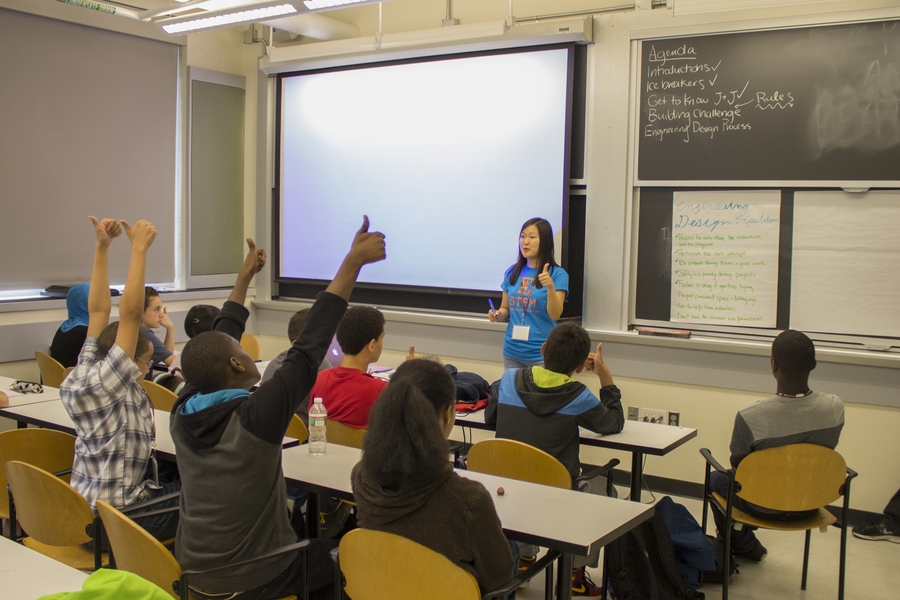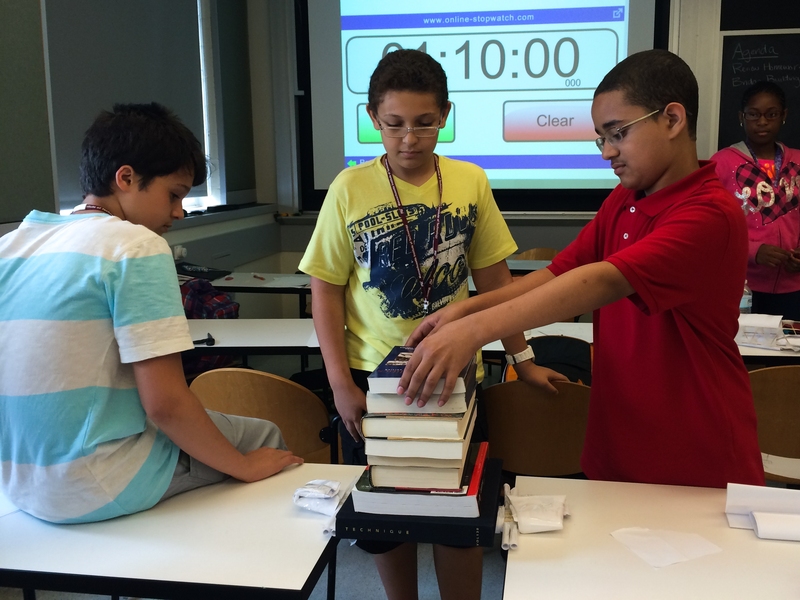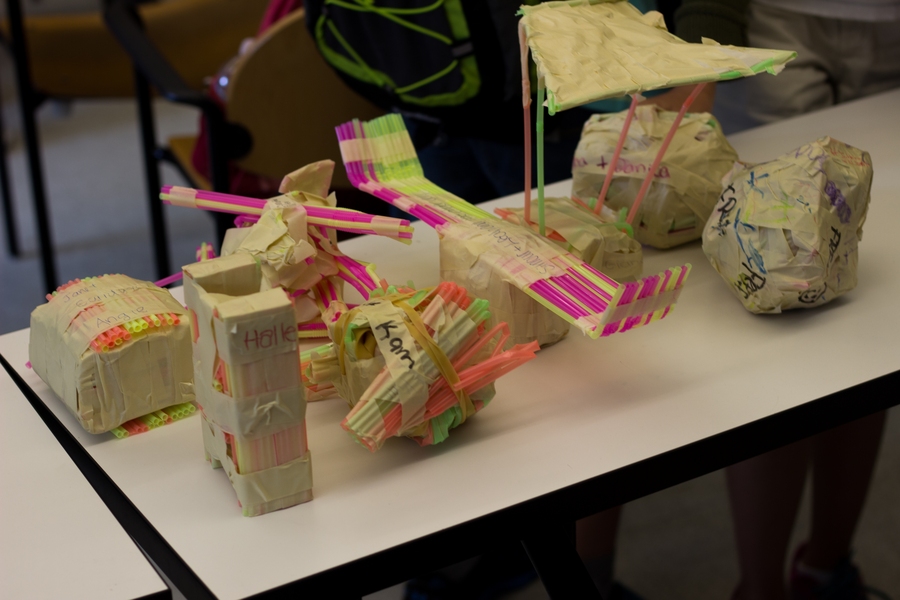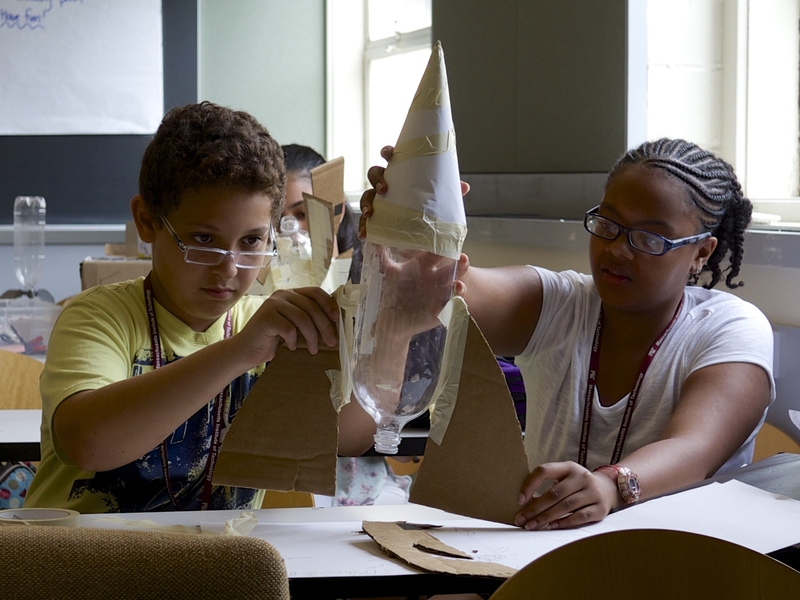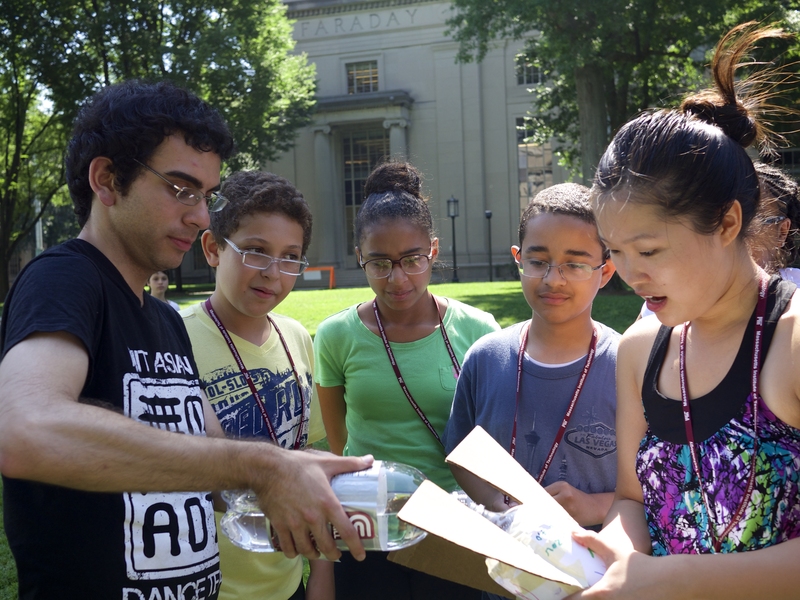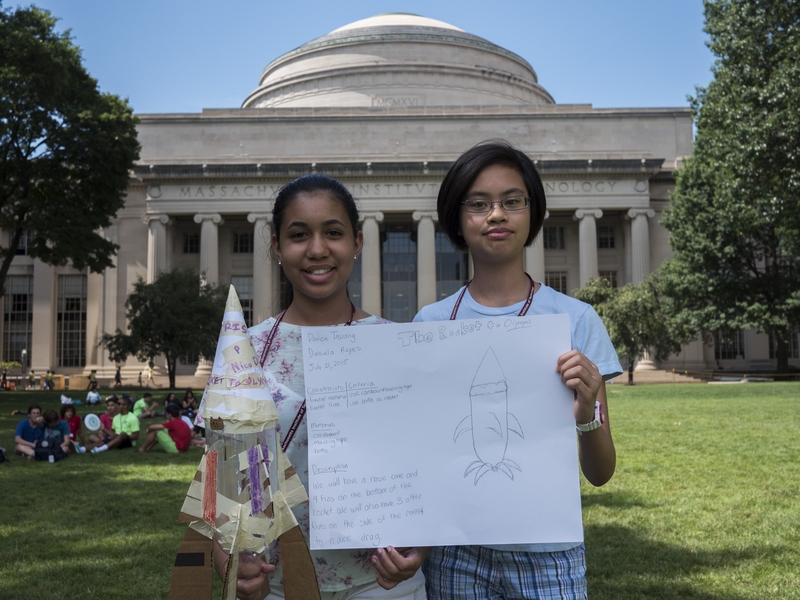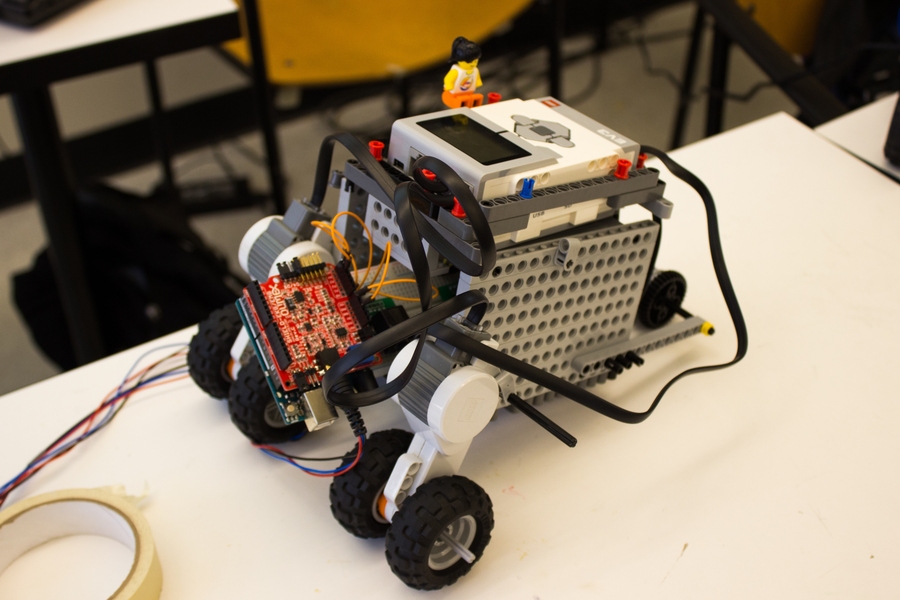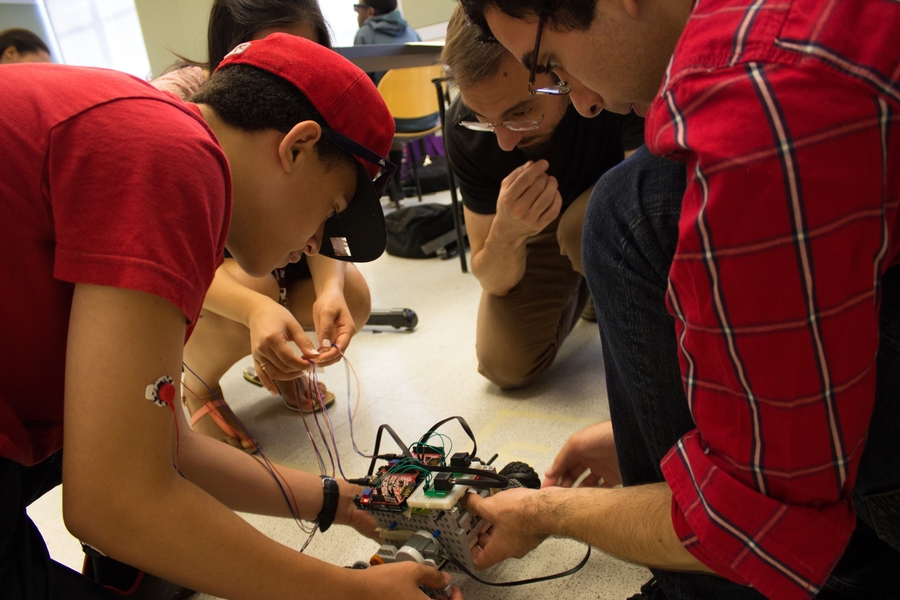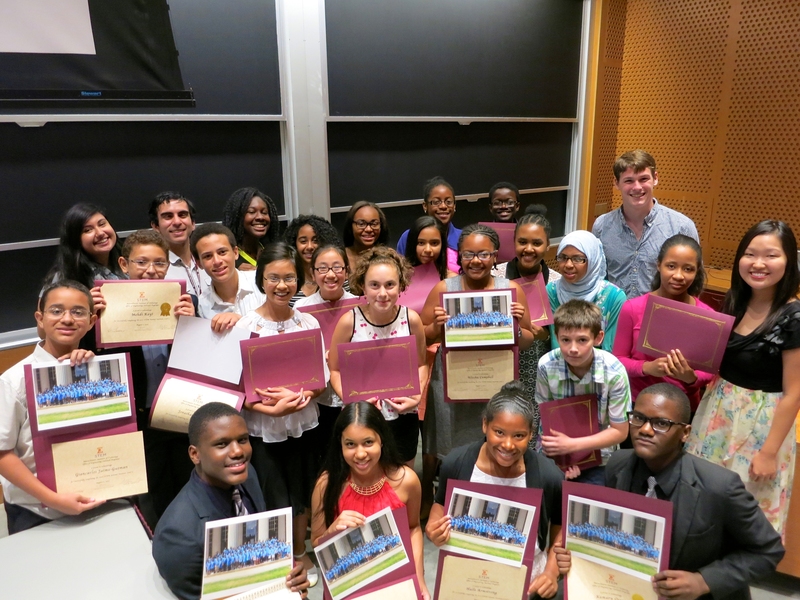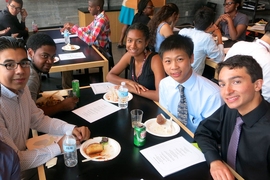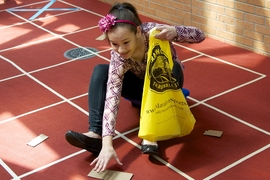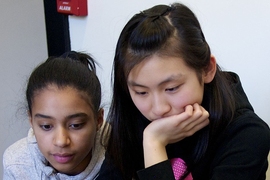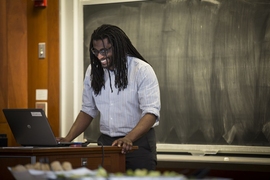While designing lessons for the 22 rising eighth graders in their Engineering Design course, instructors Julia Sun and Jonathan Corzo set two major goals: to include as many hands-on projects as possible and to make sure their students would comprehend the scientific concepts behind those projects.
Their course was part of the 2015 STEM Summer Institute, a five-week, free-of-charge program run by the MIT Office of Engineering Outreach Programs that gave 92 sixth through ninth grade students from Boston, Cambridge, and Lawrence, Massachusetts, the opportunity to learn science, technology, engineering, and mathematics during the summer at MIT. The rising eighth graders in Sun and Corzo’s class also took probability and statistics, while students in other grade levels took courses ranging from algebra to robotics.
Both Engineering Design instructors are 2015 MITgraduates with degrees in chemical engineering, and they share common passions for teaching and tinkering. Sun chose to spend her summer teaching middle school students engineering design because she wanted “to see what they could do with the freedom that we give them,” she says.
Student Leah Delacruz of Lawrence says that in science classes at her middle school, students do just a few hands-on projects a year. Knowing this and believing students are more engaged and learn best through hands-on projects, Sun and Corzo aimed to present their students with a new building challenge every other day.
Student Mehdi Kayi of Boston found the approach fresh and engaging. “They’re really lively and excited about teaching us,” he says.
Delacruz says she found Sun and Corzo more approachable than she expected. “You become friends with them, and you can talk to them about anything,” she says.
While Sun and Corzo encouraged fun, they also made sure that their students understood the science and engineering concepts behind each project. Each unit began with an introduction to applicable physics concepts. During the civil engineering unit, students learned about stress and strain as well as the effect of forces on different types of bridges before building paper prototypes that could support the weight of multiple textbooks.
“We’ll get through the very tough physics behind the engineering, and then when we get to the project every single student perks up,” Sun says.
Over the five weeks, Sun and Corzo adapted their curriculum based on student input. Early on, the students expressed an interest in environmental issues, which prompted the instructors to design an environmental engineering unit. As part of this unit, students built filtration devices and tested their devices’ effectiveness on water from the Charles River.
The course’s other six units ranged from aeronautical and astronautical engineering to electrical engineering and included projects such as designing bottle rockets and building circuits.
Sun and Corzo used projects to teach more than just science and engineering fundamentals. In one activity, the instructors charged students with building structures that could hold eggs and prevent them from breaking after a three-story drop. Rather than stopping at the engineering design lesson, Sun and Corzo asked their students to research minority and female scientists and engineers. When they handed students their eggs, Sun and Corzo told them the eggs represented their chosen scientists and engineers and it was the students’ duty to protect them.
The course’s final project was the culmination of a new neural engineering unit developed with the help of MIT Professor Joel Voldman, deputy director of the National Science Foundation Engineering Research Center for Sensorimotor Neural Engineering. Students built robots using Lego Mindstorms kits and connected them to Arduino boards. The Arduino boards were in turn connected to sensors that could be attached to students’ muscles. This resulted in robots that students could control by tensing and relaxing their muscles.
Most middle school students are not exposed to projects like these. Kayi says that his school covers the topics he learned in STEM in tenth grade or later. “STEM is preparing me for what I want to do in the future,” he says.
Over the five weeks, Sun and Corzo saw a noticeable increase in their students’ aspirations and interest in science and engineering. “It’s inspirational for me to work with these middle schoolers,” Sun says. “They come to our class and then they tell us, ‘I want to come to MIT. I want to be an engineer.’”

